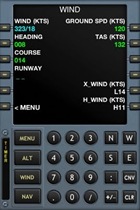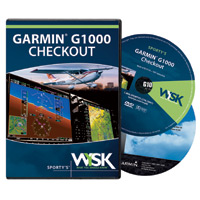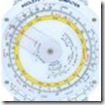Thanks to Keith Smith from PilotEdge for sharing this video which shows a PFC Modular Flight Deck with a working Garmin 430 and live, simulated ATC.
[youtube]http://www.youtube.com/watch?v=6P3UkrDLugg[/youtube]
Golf Hotel Whiskey: for pilots and aviation enthusiasts
Thanks to Keith Smith from PilotEdge for sharing this video which shows a PFC Modular Flight Deck with a working Garmin 430 and live, simulated ATC.
[youtube]http://www.youtube.com/watch?v=6P3UkrDLugg[/youtube]
 With the development and popularity of the iPhone, a number of useful applications have appeared specifically geared for pilots or the aviation community in general. One of these applications, The Pocket Flight Management Assistant (PFMA), was recently reviewed by John Ewing who has posted a detailed review about it on Aviation Mentor.
With the development and popularity of the iPhone, a number of useful applications have appeared specifically geared for pilots or the aviation community in general. One of these applications, The Pocket Flight Management Assistant (PFMA), was recently reviewed by John Ewing who has posted a detailed review about it on Aviation Mentor.
According to John, what is great about the PFMA as opposed to many other iPhone applications and hence worth repeating is that this one has the ability to calculate winds while flying. In fact and although there is no user manual with the application, John was able to figure out how to calculate winds aloft in under 20 seconds. In addition, the application’s WIND screen can also determine landing crosswind components as well plus perform a number of other useful calculations ranging from fuel calculations to meteorological conversions.
John concludes that the PFMA is a nice aviation calculator that strikes a good balance between frequently-used features and simplicity while having a user interface that resembles a flight management system. However, he also states that someone new to aviation who might still need a hand by having a product with explicitly-named functions and features might not be well served by the PFMA. Otherwise, experienced pilots will find the US$4 application a very good value and something worth having.
I use FlightStar and JeppView to plan my trips. The software is easy to learn, although there are some power user features that take more time and parts of the interface are idiosyncratic. With the optional weather downloads and JeppView software, you can set up an aircraft, plan a route and print out a complete trip kit with approach plates, enroute charts and pilot log.
It can display Jeppesen-style VFR charts and airways. You can also view VFR plates for airports and IFR approach plates. These charts are updated automatically over the internet. It’s powerful stuff and good enough for a corporate flight department. The only downside is the price. For the IFR version with European charts, it costs me around €1700 a year.
Cheaper (possibly free) alternatives include Autoplan IFR for planning airways trips and Tony Griffiths’s Cross-wind, which is a comprehensive VFR flight planning program.

 In case you are still flying a traditional aircraft and our planning to make the transition to a glass cockpit, Sporty’s has just released the new Garmin G1000 Checkout for a retail price of US$89.95. The package includes a two disc DVD training video that runs for 107 minutes (hosted by air show announcer Rob Reider who has narrated other videos for Sporty’s), G1000 PC Software Simulator, syllabus and cockpit poster and according to the company website, the course is ideal for both VFR and IFR pilots or as a refresher course for current G1000 users.
In case you are still flying a traditional aircraft and our planning to make the transition to a glass cockpit, Sporty’s has just released the new Garmin G1000 Checkout for a retail price of US$89.95. The package includes a two disc DVD training video that runs for 107 minutes (hosted by air show announcer Rob Reider who has narrated other videos for Sporty’s), G1000 PC Software Simulator, syllabus and cockpit poster and according to the company website, the course is ideal for both VFR and IFR pilots or as a refresher course for current G1000 users.
Todd Macrock has already posted a short review of the Garmin G1000 Checkout on MyFlightBlog.com and he states that he preferred this product over another one by Sporty’s that he recently reviewed (Sporty’s Air Facts: Flying Glass Cockpits). He also points out that the Garmin G1000 Checkout contains some great scenario-based training.
So if you are already a fan of some of Sporty’s other training products, then the Garmin G1000 Checkout might be worth checking out.

goFLYING has a couple of useful features. The first is a mashup that lets you plan flights using Google maps and then input wind direction and speed, fuel burn and so on to generate a navigation log. It will save these out in A4 or kneeboard format for use in-flight. Thanks to Google’s satellite maps, it’s very easy to pick out waypoints and the database seems to have all the airports in it, so you can just search for, say, Denham, and it’ll make it a waypoint.
This is likely to be most useful for VFR pilots, helicopter pilots trying to find landing spots and for familiarising yourself before a flight. However, it is very easy to use and could be a good substitute for commercial VFR flight planning software. It is, after all, free.
You can also import your GPS track file and see your actual flight track superimposed on the map.
The second is a tool that calculates sunset and sunrise in different places at different times of year. This is very handy for working out official night.